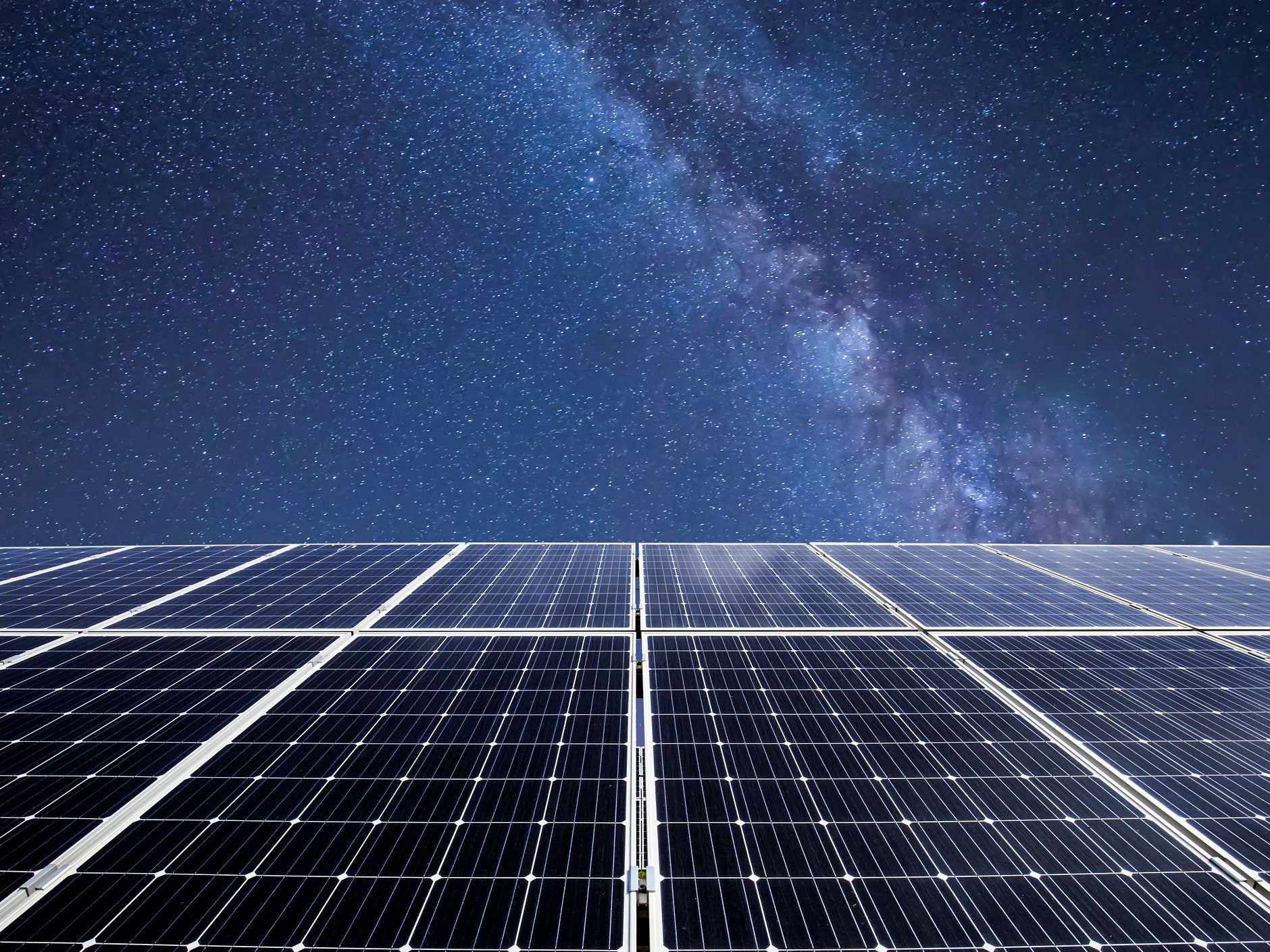Scientists invent solar panels that work at night
Harvesting infrared light at night provides ‘continuous renewable power source’

A new type of solar panel has been developed that can generate electricity at night.
Researchers at Stanford University created a photovoltaic (PV) cell that uses a process called radiative cooling to allow for 24 hour renewable energy generation.
It works by tapping into the heat being radiated from the surface of the solar cells as infrared light into outer-space on clear nights.
By incorporating a thermoelectric generator into a conventional PV solar panel, the scientists achieved 50 mW/m2 nighttime power generation.
Functioning like a conventional solar panel during the day to harvest the Sun’s energy, the panel then “runs in reverse” to keep generating electricity at night, however any clouds at night can hinder the system by reflecting the infrared radiation back to Earth.
The team of engineers who built it said they used inexpensive and common materials to set it up, meaning it could be incorporated into existing solar cells and used in remote locations where resources are limited.
“What we managed to do here is build the whole thing from off-the-shelf components, have a very good thermal contact, and the most expensive thing in the whole setup was the thermoelectric itself,” said Zunaid Omair, a metrology engineer from Stanford University who was one of the authors of the research.
The study detailing the technology, titled ‘Nighttime electric power generation at a density of 50mW/m2 via radiative cooling of a photovoltaic cell’, was published in the journal Applied Physics Letters.
The researchers hope provide a reliable and clean source of energy to the roughly 750 million people around the world who currently live without electricity.
“Our system can be used as a continuous renewable power source for both day- and nighttime in off-grid locations,” the study states.
“In many rural areas dependent on mini-grid or off-grid systems, providing power during the nighttime often necessitates substantial additional battery storage installation, which adds significant system complexities.
“Developing a mean to extract energy from existing PV cells at night would alleviate the daytime limitation of PV power generation and reduce or eliminate the need for battery storage in electrical power systems.”

Join our commenting forum
Join thought-provoking conversations, follow other Independent readers and see their replies
0Comments